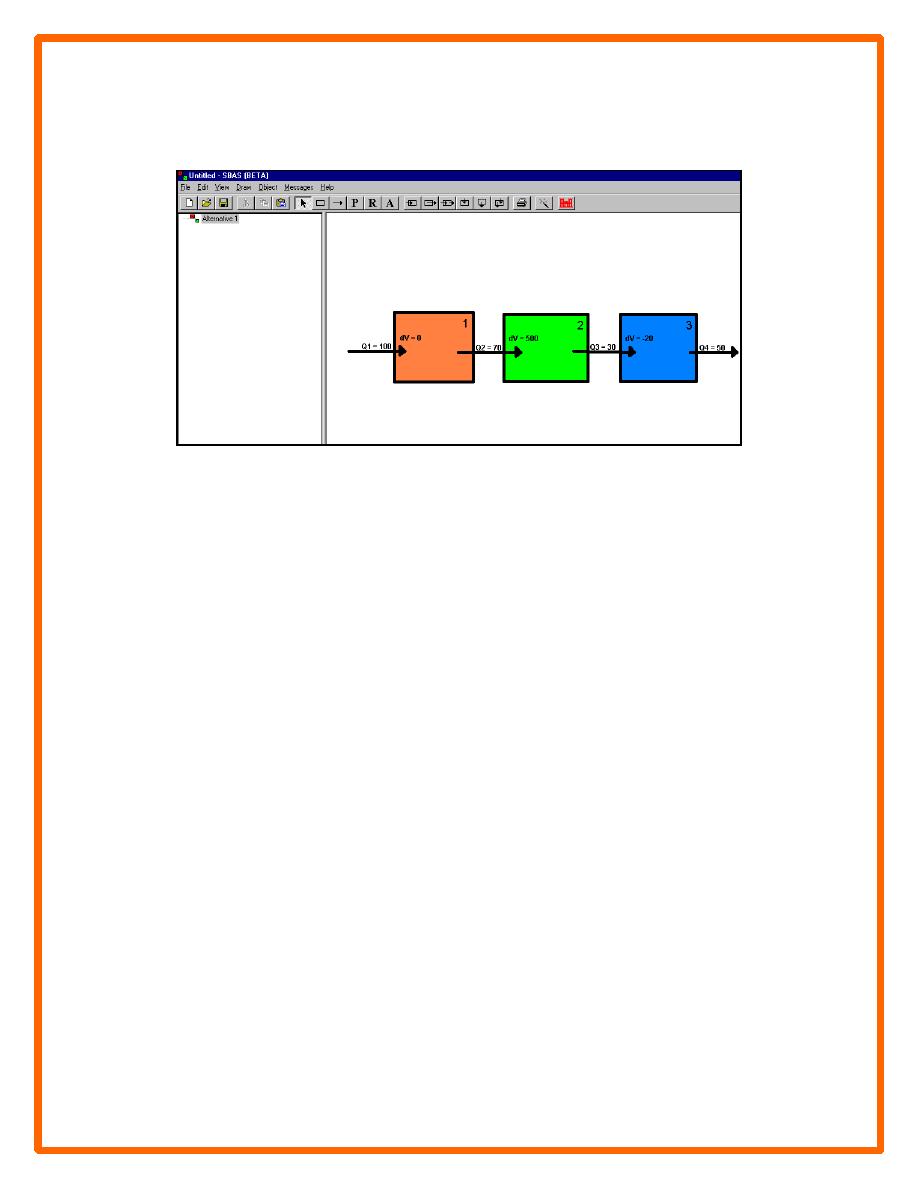
CETN IV-20
September 1999
whether a cell is balanced or not. Systematic balancing of individual cells within the
macrobudget is a central property of the SBAS methodology.
Figure 1. SBAS alternative window (left); topology window (right)
Sediment budget cells, arrows expressing directions of net, left-, and right-directed transport
rates, and notation of P- and R-values comprise the sediment budget topology. The topology
window can be expanded to scroll to the right and left (for an east-west sediment budget) or up
and down (for a north-south sediment budget). The SBAS automatically formulates and
substitutes the quantities from the topology window into the sediment budget equation
(Equation 1) based on the origin, terminus, and direction of arrows representing rates. This
visual procedure allows an integrated quantitative budget to be formed based on the conceptual
budget. At any time, the user can conveniently check the macrobudget to ensure it is balanced
before proceeding with detailed calculations.
The basic SBAS procedure is discussed in an on-line format within the Tutorial file (provided
with the installation package) and is performed as follows:
Draw arrows through and between cell boundaries, defining the sources and sinks for each
cell (establish the sediment budget topology).
Define engineering activities P and R for each cell.
Assign best-estimate and uncertainty values to volumes, transport rates, and engineering
activities within each cell.
Balance the budget of each cell and the total system (macrobudget) by reducing the residual
to zero.
The residual term in Equation 1 allows the user to explore the consequences of adding,
removing, changing the magnitude of, or changing the pathways of sources, sinks, and
engineering activities within SBAS.
3


 Previous Page
Previous Page
